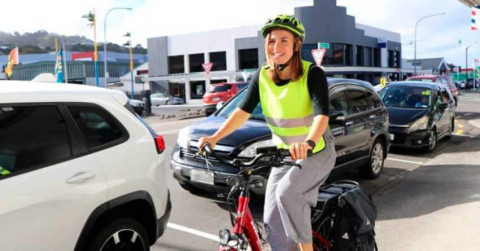
Post Covid-19 insights and learnings
Source: Healthy Streets Lower Hutt
Community want space to move around.
There is nervousness about using public transport which makes active transport more attractive.
Flexible working arrangments will change what “rush hour” looks like and may influencechanging transport modes as new routines are established (both positively and negatively).
People are more familiar with their neighbourhoods, connecting with neighboursand walking/cycling close to home.
People are realiseing the value of what they have at their doorsteps/neighbourhoods and because they are using it they are also seeing how it can be improved/changed.
Walking and cycling has built a sense of connection, people are acknowledging each other, smiling and saying hello to each other. This will lead to more resilient communities.
Since being in our homes/bubbles so much, walking and cycling has provided theopportunityto “just be” contributing to mental wellbeing and resilience.
Income and job security are top of mind for many more people than before Covid-19. The cost savings of active transport will become a more important part of the messaging potentiallyovertaking, in the short term, previous messaging priorities of wellbeing/climate.
As more people cycle and pressure on incomes increasesecurity and appropriate storage/parking facilities will become more important. Capacity of previous community partners for this type of mahi may be lower as time and resource is focused on direct welfare needs and support.
On the flipside we are seeing more investment in active transport from central government and increased Council interest.
The movement for shopping local and supporting local businesses is gaining significant momentum, active transport is perfect for shorter trips so opportunity to piggy back off shop local campaigns to promote getting to shops/businesses actively.
More people have spent time on their bikes during lockdown than ever before, collectively we will have more experience, capability and confidence in travelling by bike.
People “took back” the streets during lockdown with people feeling able to walk in the middle of the quiet roadsand going onto side of busier roadsto ensure physical distance when passing other people. The sense of safety and ownership of the space was significantly different than before lockdown.
Collectively we have redefined what “essential” is.
Greater stakeholder engagement in active transport from a wider range of regional sport and recreation organisations. Healthy Families Hutt Valley are leading a collaborative workstream on active transport for our region. Change in balance between “activity” and “sport” during lockdown. Activity is more resilient to outside forces but sport will face significant challenges in funding and capacity to respond.
Access to bikes is a pathway to employment and education. As jobs change and public transport is less attractive the difference between working and studying for some is a bike.
Local shops/dairies have become hubs of communities especially for young people. Putting bikes and connections in the places young people go willdrive uptake.
As demand and use of bikes increase, the need for bike servicing grows. There is a lack of education pathways and qualifications for bike maintenance and servicing that needs to be addressed.
Equity in access and use of road spaces changed during lockdown. Without cars it levels the playing field and the status of car ownership was diminished.
General insights and learnings
Core walking and cycling infrastructure is important but benefits will only be fully realised if local communities can easily and safetly connect to it. Connections need to be informed by community insights and co-designed to ensure buy in.
Schools are behind more active transport and barriers are specific to local physical context. The common themesacross all the schools contacted included crossing main roads safely, managing speed, safe and appealing subways and alleyways connecting to key routes, driver behaviour around pick up and drop off.
Cycling has a hump to overcome for teens as it is not “cool”. Reframing as a meansto freedom and independence is making a difference to uptake for this group.
Children expressed a need for colour and vibrancy in any designs and avoided spaces that were percieved as dark, dirty, smelly or boring. This reinforces that how a space looks or feels will impact if or how they may be used regardless of how practical solutions might be.In our play engagement with local children they expressed that they don’t feel like they have permission to use or engage the public spaces around them.

Comments
Do your research at Google
Do your research at Google